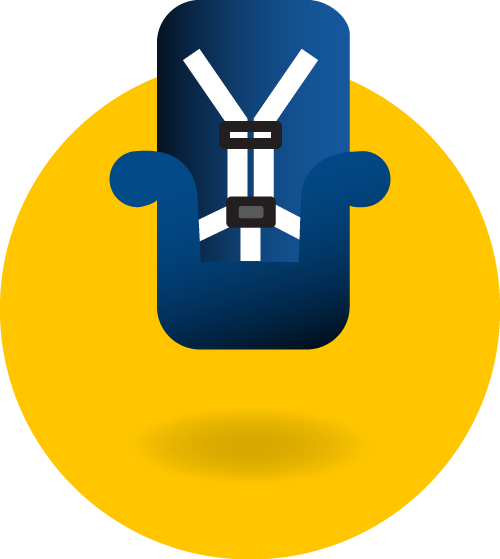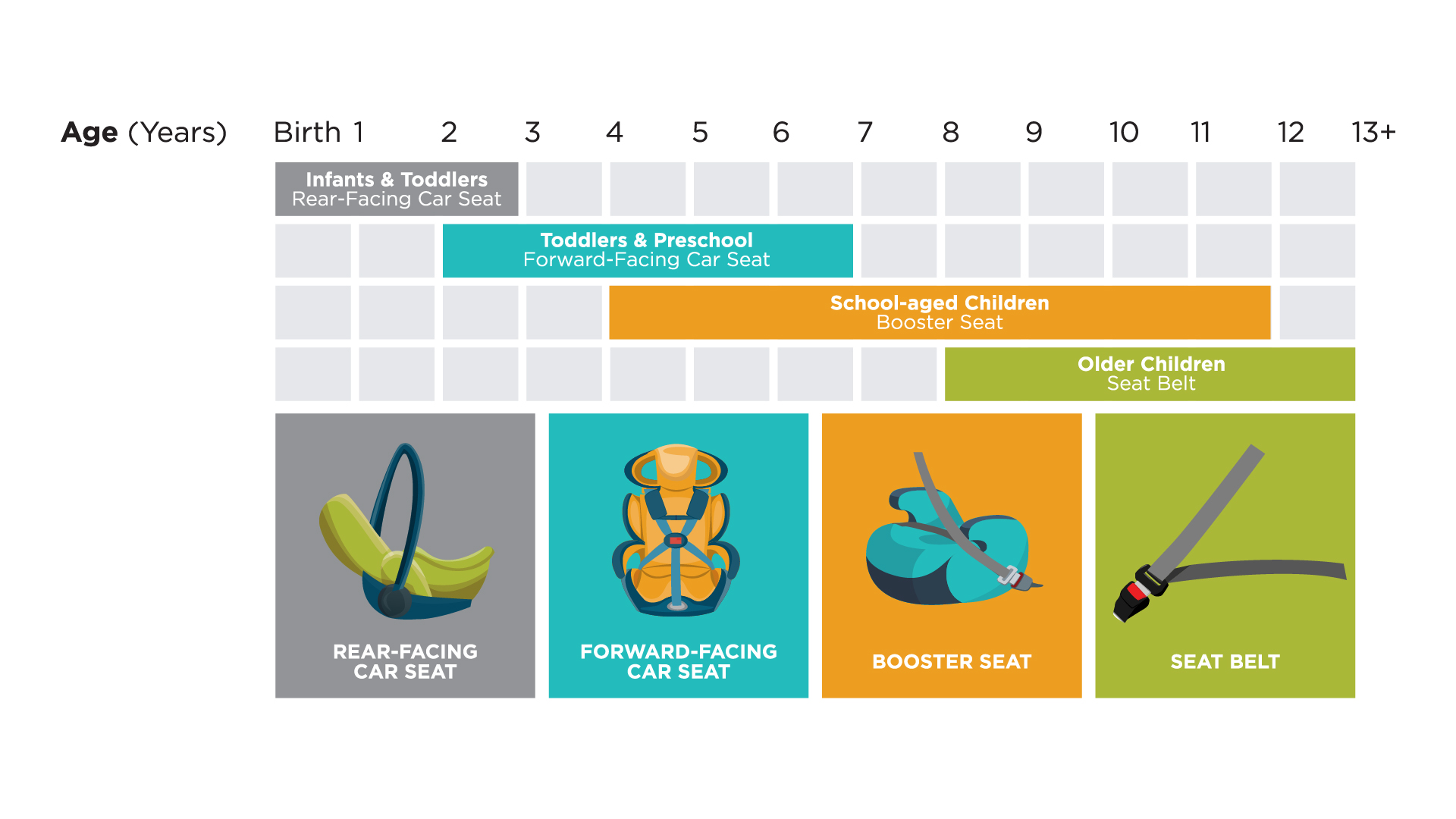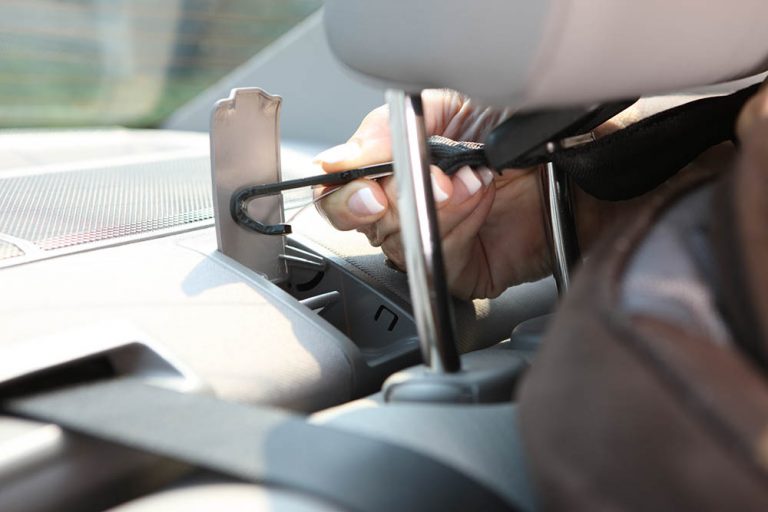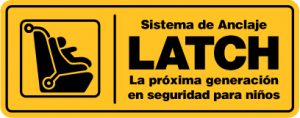
Forward-Facing Car Seats
Transitioning From a Rear-Facing to Forward-Facing Car Seat
Remember:
- When your child has reached the upper weight and/or height limit of the car seat in the rear-facing position, you can turn your convertible car seat to the forward-facing position. Follow the car seat manufacturer’s guidelines.
- Use the forward-facing car seat until your child reaches the top height or weight allowed by the manufacturer.
- ALWAYS use a tether for forward-facing installations.
When selecting a car seat ask yourself these questions:
- Does the car seat fit your child correctly?
- Is the car seat easy for you to use?
- Does the car seat fit your car?
- Can you install the car seat correctly every time?
Remember:
- Use the car seat until your child reaches the top height or weight allowed by the manufacturer.
- Remember to check out the height and weight allowed by the manufacturer.
Car Seat Recommendations

Location and Direction of Your Car Seat in the Vehicle
Never put your rear-facing car seat in the front passenger seat of a vehicle with airbags.
The back seat is safest.
Installing a Car Seat
- Read your child’s safety seat instructions or view installation online at your manufacturer’s website. This will help you know the right way to use and install your car seat.
- Contact a certified Child Passenger Safety (CPS) technician near you.
- Convertible car seats have two seat belt paths (rear-facing and forward-facing)
- Make sure you choose the correct belt path. Reference your car seat instructions.
- Choose either a seat belt or lower anchors. Never use both at the same time
- Install the car seat tightly.
- Once installed, the seat should not move at the belt path more than 1 inch from side to side or back to front.
- Lower Anchors and Tethers for Children (LATCH) is a system used to install car seats in a vehicle. Refer to your vehicle owner’s manual to see if LATCH is available in your car.
- If choosing LATCH, check your vehicle owner’s manual for the seating positions in your car that can use the LATCH system.
- In LATCH use, both the car seat and the vehicle must have LATCH parts that work together.

Tethers make a difference. That difference can be between a brain injury or no injury at all.
- When a tether anchor is available, ALWAYS use your car seat’s top tether when the child is in a forward-facing car seat.
- If you choose to use a seat belt rather than the lower anchors to secure your forward-facing car seat to the vehicle, ALWAYS use the top tether strap.
- A top tether strap can reduce the distance that the child’s head moves forward by five inches and can lessen the risk of head injuries in a crash. Click here for more information.
Check the vehicle owner’s manual and the car seat instructions for the LATCH weight limit. Both manuals must be in agreement for top tether and lower anchor use on car seats with higher weight limits.
- When no guidance is provided, discontinue use of the lower anchors and use the vehicle seat belt to secure a car seat for a child heavier than 40 pounds. Remember to always use the tether for a forward-facing installation.


Securing Your Child
- Adjust the harness straps.
- Rear-facing: at or below your child’s shoulder level.
- Forward-facing: at or above your child’s shoulder level.
- When buckling your child, keep the chest clip at armpit level.
- The harness straps should be tight enough that you cannot pinch the webbing together vertically.
- The harness should always be touching the child.
- Avoid bulky clothing and wrapping your child in a blanket before harnessing your child. Cover your child with a blanket or a bulky coat last, if needed.

Español
Simple Steps to Child Passenger Safety
Special Considerations
- Put your child in a booster seat if he/she weighs more than the harness recommends or if his/hers ears are above the top of the car seat’s back.
- A forward-facing only car seat can be converted to a belt-positioning booster seat when your child has maxed out the height or weight of the harness.
Forward-Facing FAQs
Using a top tether with a forward-facing car seat will reduce forward and side-to-side motion in a crash, helping to prevent head, neck and spinal cord injuries.
Locate the belt path arrow or label on your car seat for the correct belt path use. Follow the car seat manufacturer’s instructions.
Generally, when children are in forward-facing car seats, the harness straps should be at or above the child’s shoulders. Always refer to your car seat instructions for more information.
Car seats and booster seats in a vehicle always have to be replaced after a moderate or severe crash. Always check with the car seat manufacturer for recommendations if the crash was minor. NHSTA recommends the following criteria for assessing a child restraint in a minor crash:
- No visible cracks or deformities can be seen by inspecting the car seat or booster seat
- The vehicle involved in the crash can be driven from the scene
- The vehicle door nearest the car seat is undamaged
- There were no occupant injuries
- Airbags didn’t deploy
After a crash, talk to your vehicle insurance company to discuss options for a car seat and/or booster replacement.


